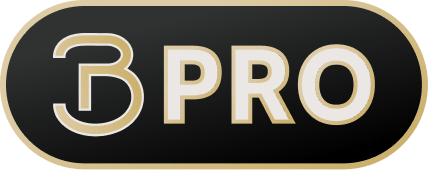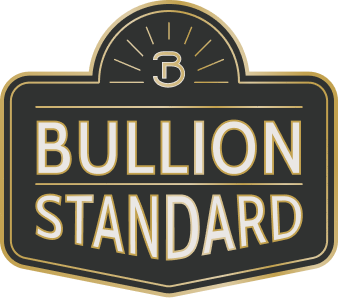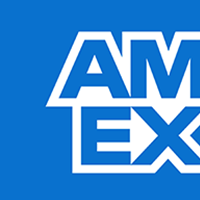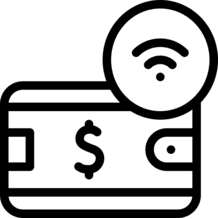How to Evaluate the Condition of Gold and Silver Coins Before Buying
By Bullion Standard ·
7 min read
Buying gold and silver bullion coins can be an exciting step toward building a more secure financial future. But to get the most out of your investment, it’s essential to do your homework.
Taking the time to evaluate each coin’s condition helps protect your investment and ensures you’re getting the value you expect. If you’ve ever wondered, "Is it worth buying silver coins?", knowing how to properly evaluate them can give you peace of mind and help you avoid costly mistakes.
At Bullion Standard, we pride ourselves on being trusted leaders in the precious metals industry. We stand for fair pricing and the belief that knowledge is the key to financial independence.
In this post, we’ll guide you through the process of assessing the quality of gold and silver coins to help you strategically invest in silver or gold.
Why Evaluating Coin Condition Matters
The condition of a physical silver or gold coin is a critical factor in determining its value. Even slight imperfections, like small scratches, worn surfaces, or dull luster, can significantly reduce a coin’s market price.
Coins in excellent condition—often referred to as "mint state" or "uncirculated"—tend to be more valuable because they retain their original design details and shine. On the other hand, coins that show signs of wear, improper cleaning, or handling will often have a lower price.
For investors, understanding a coin’s condition can help you avoid overpaying for coins that don’t hold their value or might be difficult to resell. Properly graded coins, whether professionally assessed or evaluated using DIY methods, can provide insight into a coin’s long-term worth.
Understanding Professional Coin Grading
For high-value, rare, or historical coins, professional grading is the best way to ensure authenticity and maximize resale value. Expert coin graders, known as numismatists, work at organizations like the Professional Coin Grading Service (PCGS) and the Numismatic Guaranty Corporation (NGC).
They evaluate the coin for surface wear, scratches, luster, and strike quality. After the inspection, they assign a coin grade on the Sheldon Scale, which ranges from 1 (Poor) to 70 (Perfect).
Professionally graded coins often come with a certificate of authenticity and are encased in protective slabs, ensuring their condition is preserved. These certifications give buyers confidence in their investment and can significantly boost the coin's resale value.

7 Tips for DIY Coin Evaluation
DIY coin evaluation is a great option for lower-value coins or personal collections. It’s also a good way to get familiar with assessing coin quality, especially if you're not planning to sell immediately. Here are 8 ways to ensure you're correctly assessing coins:
1. Use a Magnifying Glass
A magnifying glass allows you to spot the smallest imperfections, such as fine scratches, dings, and wear, that could affect the coin’s value.
Choose one with 5x to 10x magnification so you can clearly check these details. A built-in LED light can further enhance visibility, making it easier to see more subtle flaws.
When inspecting, focus on all areas of the coin, especially intricate details like lettering and designs, where minor damage is often more noticeable.
2. Check for Surface Condition and Blemishes
The surface of a coin tells a lot about its overall condition. Scratches, blemishes, tarnishing, and discoloration are all signs that the coin may have been mishandled or improperly stored.
Some coins might be easier to check for wear than others, depending on their design and surface area. For example, on the Silver Eagle coin, which has a large, flat surface area, even minor imperfections can be very noticeable.
Some surface wear is normal, especially for older coins. However, the general rule is that the smoother and cleaner the surface, the better the condition—and value.
Silver eagle
3. Assess Wear and Tear
Over time, handling and circulation can gradually erode the fine details of a coin. This can impact its condition and value.
When evaluating a coin, pay close attention to the high points of the design—areas like faces, lettering, or raised edges—as these are typically the first to show signs of wear.
If there is wear, assess whether or not it's evenly distributed across the surface or concentrated in specific areas, as uneven wear can lower the coin's desirability.
4. Prioritize Luster and Shine
Luster refers to how light reflects off the coin’s surface. It's a key factor in determining the overall appeal of a coin and is often a key indicator of its grade.
A coin with a strong, original luster will appear shiny and almost reflective, which is a sign of minimal handling and good preservation. In contrast, dull or flat-looking coins may have suffered damage from improper cleaning or environmental exposure.
5. Look for Bag Marks or Hairlines
Hairlines are tiny, fine scratches that can appear on the surface of a coin, often caused by improper cleaning or handling. Though they may seem insignificant, these marks can have a big impact on the coin’s grade.
Similarly, bag marks are small dings or scratches that occur when coins rub against each other in storage. While minor bag marks are common, especially on older coins, those with fewer marks tend to be more sought after.
6. Assess Coin Edges
The condition of a coin’s edges provides important clues about how much wear it has experienced. Coins with sharp, well-defined edges are usually in better condition, while rounded or worn edges may indicate extended circulation.
If the edge details are still crisp, the coin is likely to be in good shape. Coins that have been handled more frequently or mishandled may show significant edge wear, decreasing their value.
7. Check for Authenticity Certifications
It's always necessary to ensure the coin you're looking at is authentic. Counterfeit coins can be very convincing and are often difficult to detect, especially for new collectors.
Fraudulent coins can not only lead to financial losses but can also damage your overall investment strategy. To protect yourself, always purchase from reputable sellers and look for authenticity certifications from trusted organizations like the PCGS or the NGC.
These certifications provide peace of mind by verifying the coin’s authenticity and often include additional grading information, which can be valuable for assessing its condition.

Is It Worth Buying Silver Coins?
Silver and gold bullion coins are both excellent options for diversifying your investment portfolio. However, silver coins often receive less attention compared to gold. So, is it worth buying silver coins as a part of your investment strategy?
The answer depends on your investment goals. Silver can be a great choice for those seeking a tangible asset that hedges against inflation during times of economic uncertainty. Additionally, the silver market is generally more accessible to new investors. Silver prices are generally lower than gold, while still offering substantial growth potential.
Ultimately, both silver and gold are regarded as stable, long-term investments with intrinsic value that extends beyond the fluctuations of paper currency.
silver prices
The Importance of Buying from a Trusted Dealer
Knowing how to properly evaluate gold and silver coins can safeguard your investment. However, equally important is buying from a trusted source.
A reputable precious metal dealer will ensure that the coins you purchase are authentic, fairly graded, and accurately priced.
At Bullion Standard, we take pride in offering transparency, fair pricing, and expert knowledge. Our goal is to empower you to make smart investments in gold and silver coins. Browse our selection today with a company you can trust.






















